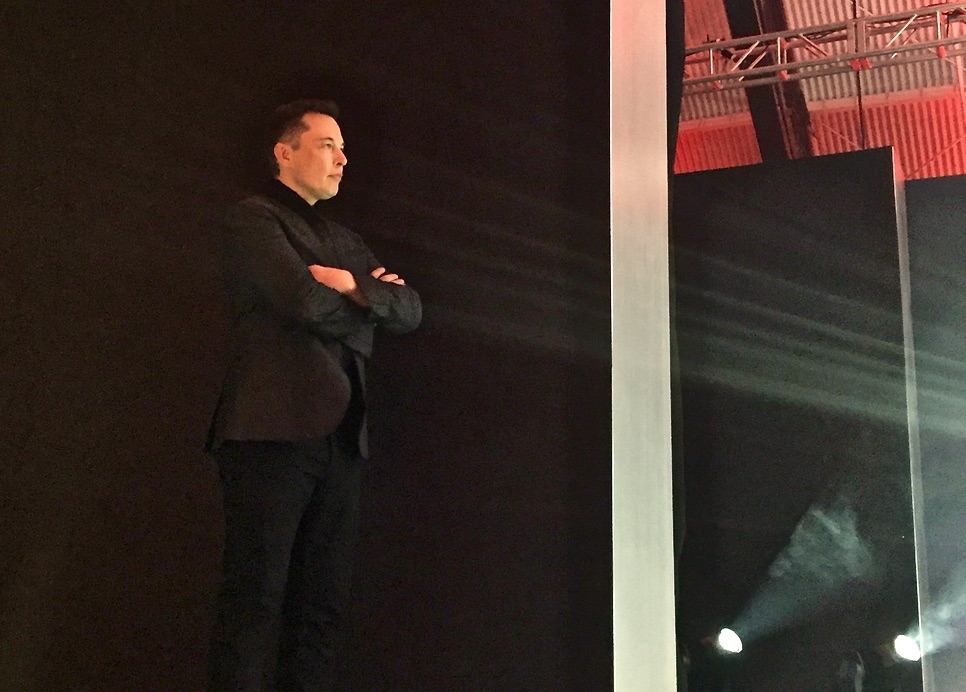
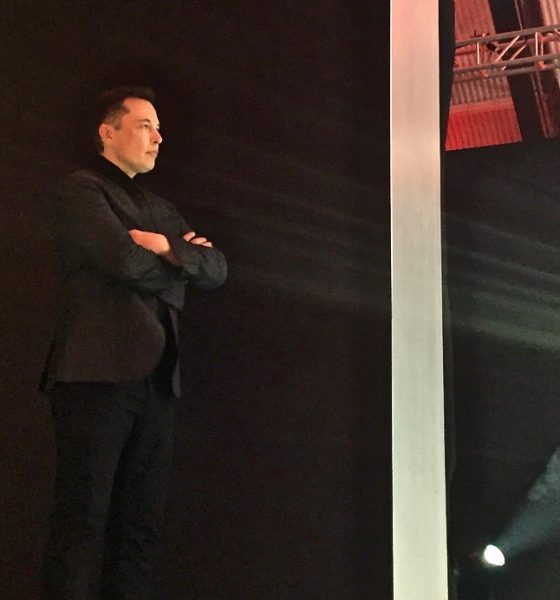
Lifestyle
Elon Musk reveals details on Neuralink brain-computer with human housecat prevention plan
“I don’t love the idea of being [an artificial intelligence] house cat, but what’s the solution? I think one of the solutions that seems maybe the best is to add an AI layer.” – Elon Musk, Code Conference 2016
An AI layer to your brain, he means. Not happy with simply improving technology that’s only been around for the last century, innovative entrepreneur Elon Musk has his sights set on the way humans communicate, something that hasn’t been vastly improved on in over 50,000 years of evolution.
Musk has referred to something called “neural lace” several times recently, most notably at Vox Media’s Recode Code Conference in June 2016; however, not many details were known about how Musk envisioned this technology being implemented. You know, the Musk way of doing it. He suggested at the conference that he might be willing to tackle the challenge himself, and a few months later, teased a few times that he was in fact working on the idea.
Making progress. Maybe something to announce in a few months. Have played all prior Deus Ex. Not this one yet.
— Elon Musk (@elonmusk) August 28, 2016
Maybe next month
— Elon Musk (@elonmusk) January 25, 2017
The announcement came in the form of a startup called Neuralink Corp, the initial details for which were originally reported by the Wall Street Journal. He seemed to have collected some impressive scientific minds and combined them with personal funding to initiate the company’s work. Other than speculation about what types of products could be created by the company and Musk’s initial idea of a direct interface with the brain’s cortex, not much information was available. More recently, a few more pixels were filled in on Musk’s vision.
Tim Urban of WaitButWhy.com, one of Musk’s preferred correspondent contacts (i.e., Internet writers), has been selected again as the person given the most in-depth information and access to Musk in order to publish a very detailed piece on what Musk has been up to.
Urban previously discussed and published details about Musk’s work on SpaceX’s vision for Mars and Tesla (with lots of direct access to Musk himself), and now has published a very long, yet very informative, piece on Musk’s NeuraLink company. He calls the company’s overall goal a “Wizard Hat”, and after seeing how much access Urban had to Musk and his new Neuralink team to gather information, that label is probably pretty accurate.
In Urban’s piece, he focuses on understanding what the business side of Neuralink will involve, as it’s the business models of Tesla and SpaceX which enable and drive their innovations. “We are aiming to bring something to market that helps with certain severe brain injuries (stroke, cancer lesion, congenital) in about four years,” Musk is quoted as saying.
The incredibly complicated nature of the human brain, a multi-million year biology project in the making, unsurprisingly presents numerous challenges for scientists wanting to direct the flow of information into and out of it. Understanding all of the details of “how” the brain functions isn’t the challenge, though. It seems to come back down to engineering. As summarized by Urban, after some 1,000 interviews with multi-disciplinary (and amazing) science people, Musk put his team together and Neuralink Corp. was born to start working on it.
The first major challenge described in Urban’s piece is the concept of bandwidth, or rather, how many brain neurons (cells in the brain which essentially provide the 1’s and 0’s of brain signals) can be read by electrodes at a time. He quotes the Neuralink people as needing around a million neurons to be read in order to really achieve something revolutionary.
If you’re familiar with computer chips at all, the comparison to Moore’s Law is a decent metaphor here. According to this law, the number of transistors on a computer chip doubles every 18 months, and this has led to computers becoming both smaller and faster. If you liken “transistors” to “electrodes”, you can see the engineering challenge for neural lace companies.
Then there’s also the question of whether people are going to be willing to let their brains be voluntarily experimented with. Musk’s cult following might give him a trust advantage for seeking out willing participants, but skull surgery may turn out to be too much even for them. According to Tim Urban, the Neuralink team is acutely aware of this concern, and has thus made “non-invasive” implantation a huge focus for brain-interface technology to really take off. Also of issue is accessibility to the technology to make the implantation possible. In Urban’s discussions with him, Elon Musk likened the technology needed to what Lasik surgery machines do.
In summary, in order for Neuralink Corp. to achieve the innovative leap which will change the world forever with direct brain-interface technology (the “Wizard Hat”), they’ve got to make electrode manufacturing about as advanced as computer chip manufacturing, and they’ve got to be able to install whatever electrode device is developed into brains in a very non-invasive, automated way. Also, they will need to figure out brain-friendly WiFi, some serious miniaturization solutions, and develop a “neuron signal” to “human language” dictionary.
Easy peasy, lemon squeazy. [Yeah, that was sarcasm.]
Quite honestly, it’s not the medical procedure that concerns me, but rather the potential of not being able to block spam that has direct access to my brain. Between Minority Report and my daily email battles, yikes! Sure, there are already brain-implanted devices that solve problems; however, I think there’s a difference between correcting functions the brain is supposed to have and giving something unfiltered access to adding something that wasn’t already there. I can put my phone away if I don’t want to deal with a Twitter freak out deluge. I can’t exactly do that with my brain. You know, just saying. The WaitButWhy piece gave me even more reasons to worry, so I feel justified.
Tim Urban’s piece also detailed some pretty amazing things that could come out of the neural lace field that sound like science-based versions of telepathy and magic. The ultimate goal, though, was to enable human brains to be as functional as artificial intelligence in order to avoid all the pitfalls of superintelligent AI. Actually, to be a bit more clear on Elon Musk’s vision for all this brain-interface technology, he wants the interface to connect to a super-human-collective AI cloud which feels just as much a part of you as any other part of your brain does.
For instance, when you have a thought, you don’t consider which part of your brain’s anatomy created it. It just happens and you consider it a part of your being. Imagine a super computer as part of that “you” system, and congrats! You’re [kind of] getting where Musk is headed with Neuralink. Or at least that’s the long term goal of what he’s starting with the company. You know, kind of like the moving the baton forward thing he aimed for with SpaceX and getting to Mars.
I’m going to quote Urban on this, actually:
He started Neuralink to accelerate our pace into the Wizard Era—into a world where he says that “everyone who wants to have this AI extension of themselves could have one, so there would be billions of individual human-AI symbiotes who, collectively, make decisions about the future.” A world where AI really could be of the people, by the people, for the people.
Where Neuralink will come down amongst current competitors already in the field (Facebook, Braintree, etc.) is obviously yet to be seen, but it’s yet another reminder that when Elon Musk says there’s a challenge needing to be solved, there’s a good chance he’s not going to wait for someone else to do it.

Lifestyle
Tesla Model S Plaid battles China’s 1500 hp monster Nurburgring monster, with surprising results
There is just something about Tesla’s tuning and refinement that makes raw specs seem not as game-changing.
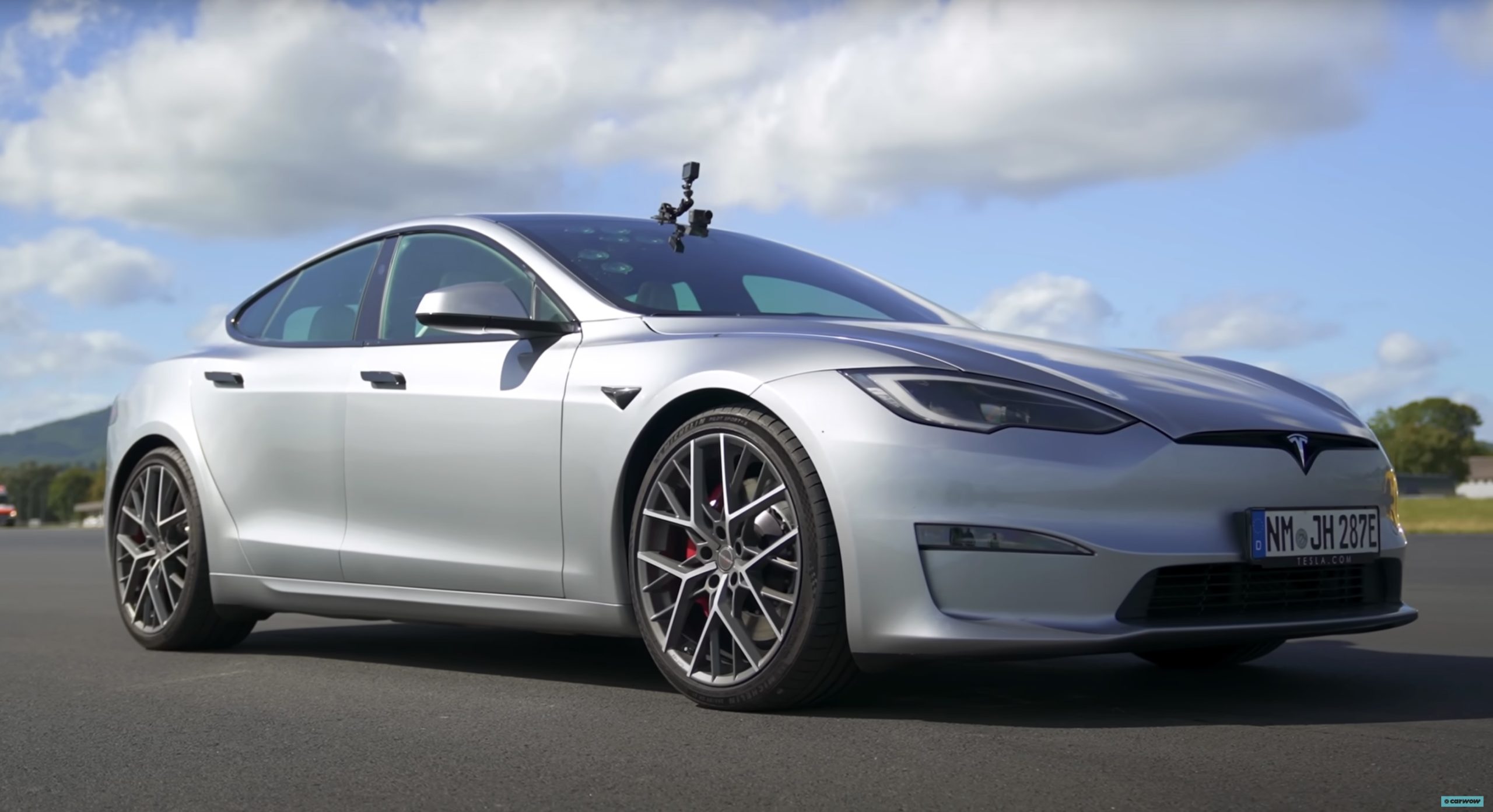
The Tesla Model S Plaid has been around for some time. Today, it is no longer the world’s quickest four-door electric sedan, nor is it the most powerful. As per a recent video from motoring YouTube channel Carwow, however, it seems like the Model S Plaid is still more than a match for some of its newer and more powerful rivals.
The monster from China
The Xiaomi SU7 Ultra is nothing short of a monster. Just like the Model S Plaid, it features three motors. It also has 1,548 hp and 1,770 Nm of torque. It’s All Wheel Drive and weighs a hefty 2,360 kg. The vehicle, which costs just about the equivalent of £55,000, has been recorded setting an insane 7:04.957 at the Nurburgring, surpassing the previous record held by the Porsche Taycan Turbo GT.
For all intents and purposes, the Model S Plaid looked outgunned in Carwow’s test. The Model S Plaid is no slouch with its three motors that produce 1,020 hp and 1,420 Nm of torque. It’s also a bit lighter at 2,190 kg despite its larger size. However, as the Carwow host pointed out, the Model S Plaid holds a 7:25.231 record in the Nurburgring. Compared to the Xiaomi SU7 Ultra’s record, the Model S Plaid’s lap time is notably slower.
Real-world tests
As could be seen in Carwow’s drag races, however, Tesla’s tech wizardry with the Model S Plaid is still hard to beat. The two vehicles competed in nine races, and the older Model S Plaid actually beat its newer, more powerful counterpart from China several times. At one point in the race, the Xiaomi SU7 Ultra hit its power limit due to its battery’s temperature, but the Model S Plaid was still going strong.
The Model S Plaid was first teased five years ago, in September 2020 during Tesla’s Battery Day. Since then, cars like the Lucid Air Sapphire and the Xiaomi SU7 Ultra have been released, surpassing its specs. But just like the Model Y ended up being the better all-rounder compared to the BYD Sealion 7 and the MG IM6, there is just something about Tesla’s tuning and refinement that makes raw specs seem not as game-changing.
Check out Carwow’s Model S Plaid vs Xiaomi SU7 drag race video below.
Lifestyle
500-mile test proves why Tesla Model Y still humiliates rivals in Europe
On paper, the BYD Sealion 7 and MG IM6 promised standout capabilities against the Model Y.
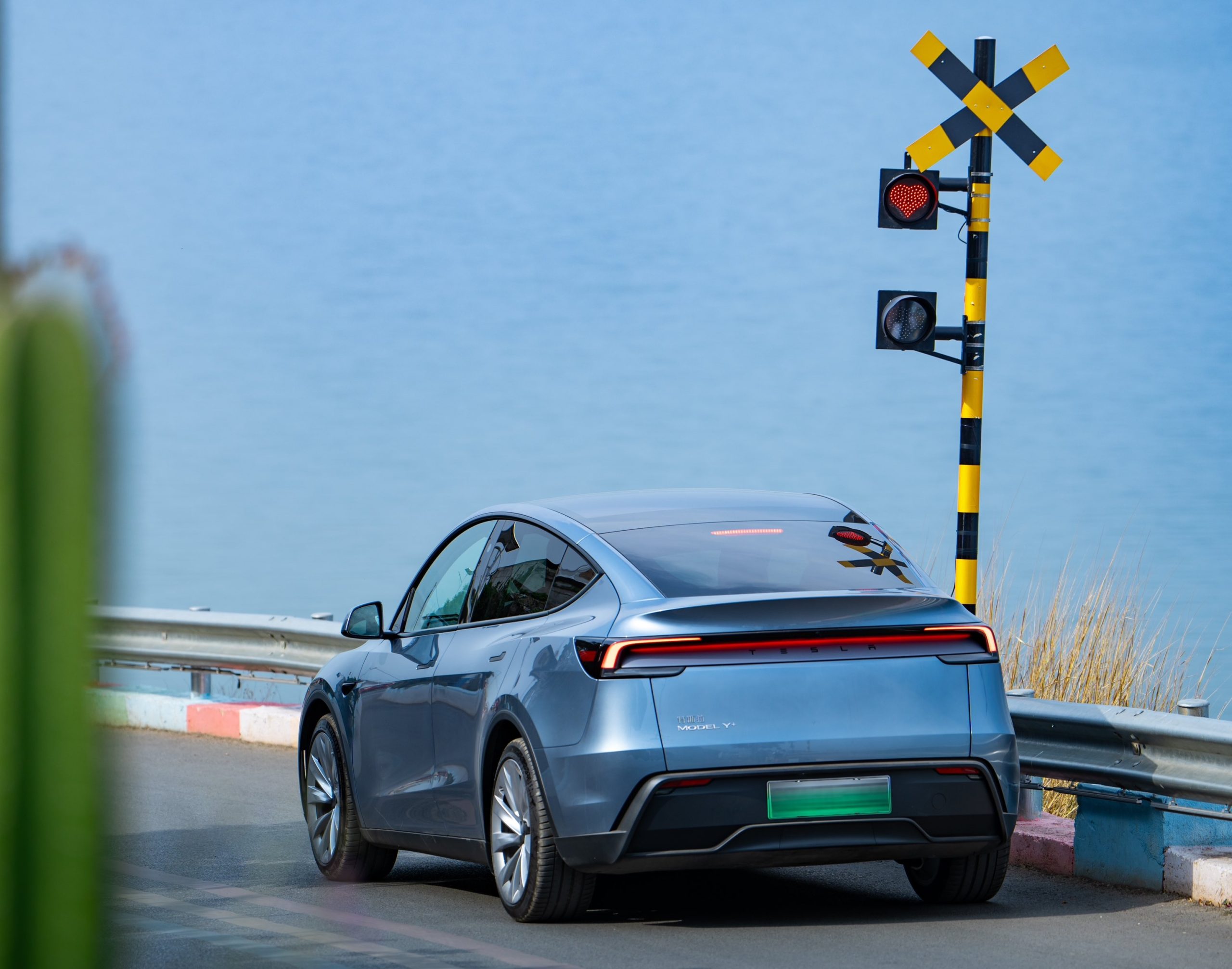
BYD is seeing a lot of momentum in Europe, so much so that mainstream media has taken every opportunity to argue that the Chinese automaker has beaten Tesla in the region. But while BYD sales this year in Europe are rising and Tesla’s registrations remain challenged, the raw capabilities of vehicles like the Model Y are difficult to deny.
This was highlighted in a 500-mile challenge by What Car? magazine, which showed that the new Tesla Model Y is more efficient, cheaper to run, and more reliable than rivals like the BYD Sealion 7, and even the nearly 400 KW-charging MG IM6.
Range and charging promises
On paper, the BYD Sealion 7 and MG IM6 promised standout capabilities against the Model Y. The Sealion 7 had more estimated range and the IM6 promised significantly faster charging. When faced with real-world conditions, however, it was still the Model Y that proved superior.
During the 500-mile test, the BYD nearly failed to reach a charging stop, arriving with less range than its display projected, as noted in a CarUp report. MG fared better, but its charging speeds never reached its promised nearly-400 kW charging speed. Tesla’s Model Y, by comparison, managed energy calculations precisely and arrived at each stop without issue.
Tesla leads in areas that matter
Charging times from 25% to 80% showed that the MG was the fastest at 17 minutes, while Tesla and BYD were close at 28 and 29 minutes, respectively. Overall efficiency and cost told a different story, however. The Model Y consumed 19.4 kWh per 100 km, compared to 22.2 for MG and 23.9 for BYD. Over the full trip, Tesla’s charging costs totaled just £82 thanks to its supercharger network, far below BYD’s £130 and MG’s £119.
What Car? Magazine’s testers concluded that despite BYD’s rapid sales growth and the MG IM6’s seriously impressive charging speeds, Tesla remains the more compelling real-world choice. The Model Y just offers stability, efficiency, and a proven charging infrastructure through its Supercharging network. And as per the magazine’s hosts, the Model Y is even the cheapest car to own among the three that were tested.
Watch What Car? Magazine’s 500-mile test in the video below.
Lifestyle
Tesla Cybertruck slapped with world’s least intimidating ticket, and it’s pure cringe
One cannot help but cringe and feel second-hand embarrassment at the idea of a person just driving around with a stack of these babies.
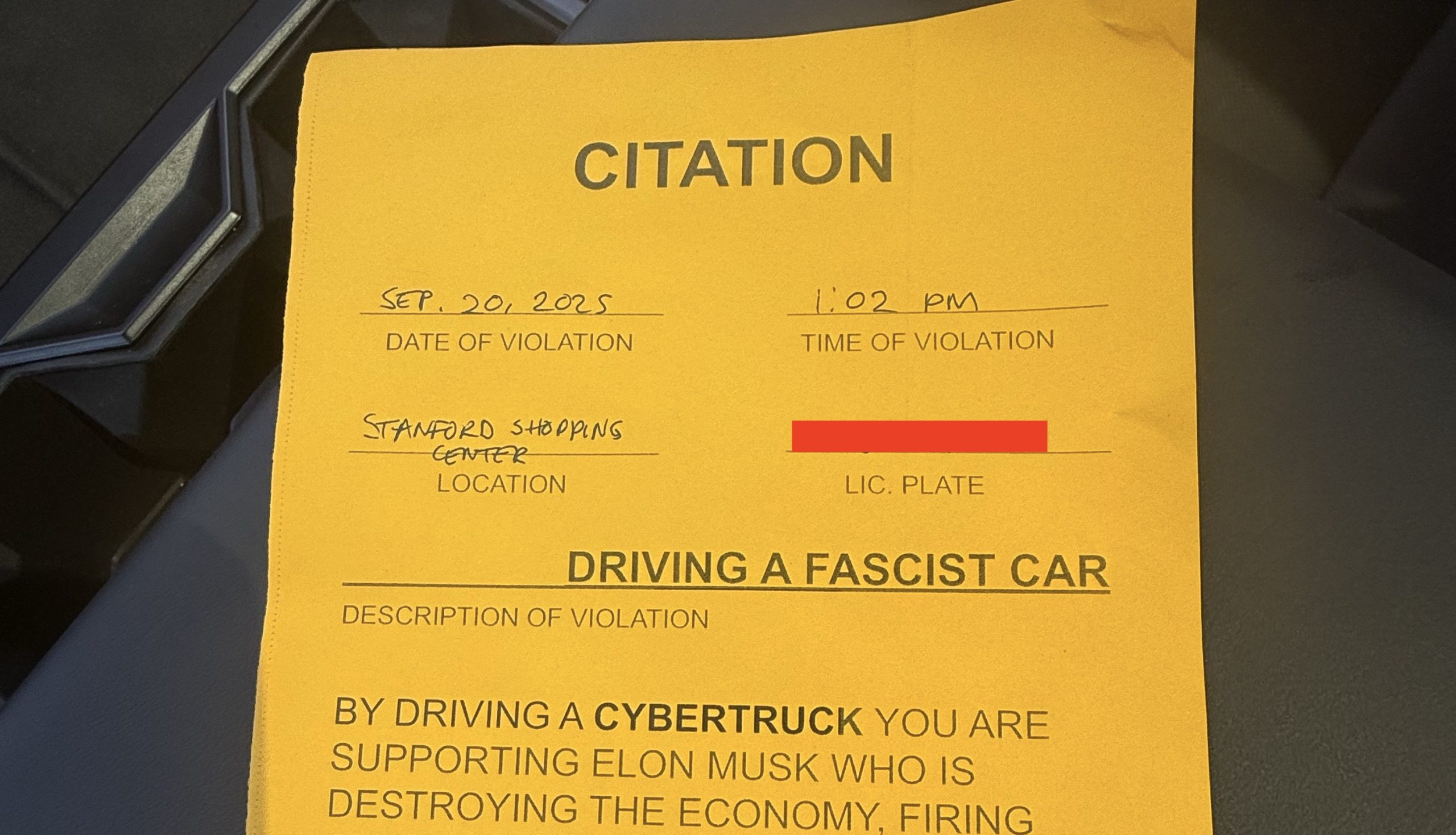
A Cybertruck parked at Stanford Shopping Center in California was recently hit with what might be the most try-hard piece of paper ever slipped under a wiper blade: a “fake citation” accusing the driver of supporting a “fascist car.”
The note, shared on X by Tesla staff program manager Ryan Torres, quickly made the rounds on X, where it quickly gained attention as an example of how not to protest.
The world’s least intimidating ticket
According to the citation, the supposed “violation” was “driving a fascist car.” The remedial action? Take the bus, call an Uber, or ride a bike. The note also dubbed Elon Musk a “chainsaw-wielding Nazi billionaire.” Now, protests against Tesla and Elon Musk have become commonplace this year, but one cannot help but cringe and feel second-hand embarrassment at the idea of a person just driving around with a stack of fake anti-Tesla/Musk citations.
Torres pointed out the irony himself in his post on X. Tesla currently employs over 140,000 Americans, and SpaceX has put the U.S. firmly back at the top of space technology. As Torres put it, maybe the person behind the world’s least intimidating ticket should “read a book on innovation before vandalizing” other people’s property.
Peak performative clownery
Not to mention that the fake ticket’s logic collapses under its own weight. EVs like the Cybertruck are literally designed to reduce emissions, not “destroy the economy.” If anything, Tesla has bolstered the United States’ economy by fueling jobs in engineering, manufacturing, and clean energy. It’s not the first time a Tesla has been the target of vandalism or politically charged notes, but this one stands out for sheer cringe value.
Torres summed it up neatly: “Peak clownery.” On that point, at least, the citation earns full marks. In a way, though, perhaps cringe fake tickets are not as bad as the literal firebombs that were being thrown at Tesla stores and cars earlier this year because some critics were gleefully misinformed about Elon Musk.








